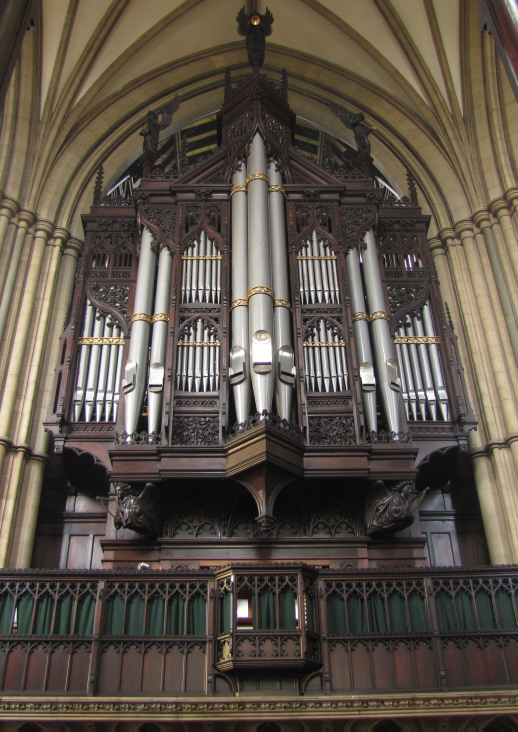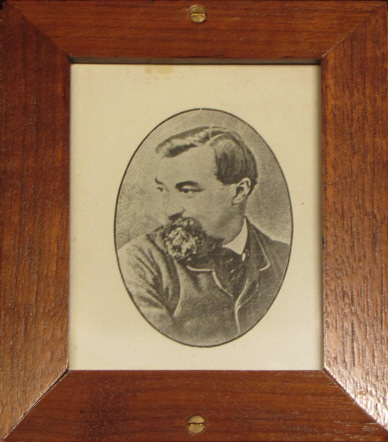The Armley Schulze
Hauptwerk (v5 and upwards) Virtual Organ
© Lavender Audio 2008 - 2024











The work of the Schulze dynasty dates back to the time of J.S. Bach; however the
fourth generation of this family - Johann Friedrich - is usually regarded as the
first with international significance. His meeting with Weimar organist Johann Gottlob
Töpfer in 1824 was highly formative, setting a course for the future sound of the
Schulze organ. Töpfer's work on pipe scaling had become hugely influential to the
organ builders of the 19th century and the importance he attached to foundation stops,
strings and increasing wind pressures all represented a move away from established
practices of the era.
Schulze's introduction to Great Britain came by personal invitation of Prince Albert
in 1851 at the time of the Great Exhibition in Crystal Palace, London. The instrument
exhibited there, although small, was noted for its excellent construction, warm,
powerful chorus, not to mention new stops such as the Lieblich Gedact, introduced
to a British audience for the first time. This, along with the German company's newly
found royal patronage, gradually caused the name of Schulze to become known across
the United Kingdom, resulting in a variety of new commissions. By now, J.F.'s eldest
son Edmund was supervising most of the work - it was he who had exhibited the Crystal
Palace organ and he was responsible for noted instruments such as Doncaster and Tyne
Dock, built in the early 1860s. In doing so, Edmund built relationships with the
organ building trade in England - most of the Doncaster pipes were supplied by Edward
Violette of London, a firm subsequently bought by Charles Brindley. Brindley himself
provided a temporary instrument to Doncaster whilst the work was carried out on the
new organ there and he ended up supplying pipework to Edmund Schulze in almost all
of his other English commissions - with just one exception.
This is indeed where the Armley Schulze enters the story, although this organ was
originally built for a very different environment ... a chalet styled wooden structure
with seating for some 600 people. This so-called "Organ Room" was the brain child
of Leeds-based engineer, mountain climber and organ aficionado Thomas Kennedy, whose
wife Clara was an accomplished organist. The organ room was to be a part of the couple's
newly built home, Meanwood Towers, a neo-gothic edifice designed by Edward Welby
Pugin. History records initial correspondence between Kennedy and Schulze dating
from 1866 where a sum of £500 is quoted for a two manual organ of 16 stops.
A BRIEF HISTORY OF THE SCHULZE ORGAN
SPECIFICATION OF THE SCHULZE ORGAN AS BUILT IN 1869 FOR MEANWOOD TOWERS
GREAT
Sub Principal
Bordun
Major Principal
Gemshorn
Hohl Flöte
Gedact
Hohl Flöte
Octave
Rausch Quinte
Mixtur
Tuba
Trompete
Swell to Great
Choir to Great
16
16
8
8
8
8
4
4
II
V
16
8
SWELL
Bordun
Geigen Principal
Gamba
Salicional
Rohr Flöte
Flauto Traverso
Octave
Flauto Traverso
Cymbel
Horn
Oboe
Clarine
Great to Swell
Choir to Swell
16
8
8
8
8
8
4
4
IV
8
8
4
CHOIR
Lieblich Bordun
Minor Principal
Cello und Violone
Harmonica
Orchester Flöte
Lieblich Gedact
Lieblich Flöte
Octave
Piccolo
Cornette
Clarinette
16
8
8
8
8
8
4
4
4
II-V
8
ECHO
Tibia Major
Vox Angelica
Echo Oboe
Zart Flöte
Dolcan
Still Gedact
Dolcissimo
Echo Flöte
Nasard
Flautino
PEDAL
Principal Bass Wood
Violon
Sub Bass
Quinte
Octave
Violoncello
Flöten Bass
Octave
Posaune
Trompete
Great to Pedal
Swell to Pedal
Choir to Pedal
16
16
16
10 2/3
8
8
8
4
16
8
Over the coming months, Kennedy continually changed the design brief and the specification eventually grew to four manuals and 55 stops. Schulze was further disadvantaged by a lack of knowledge of the dimensions of the new room, resulting in an overall delay to the completion of the project. Finally, in 1869, at a cost of £1800, the organ was installed and received a private opening recital given by Samuel Sebastian Wesley.


Sadly, some 8 years later Clara's health deteriorated and the organ was put up for
sale. Two wealthy sisters from nearby Harrogate snapped up the instrument and presented
it on loan to their newly completed local church of St Peter. The move was carried
out by Edmund Schulze and Charles Brindley (now as part of Brindley and Foster, who
were to build the St Anne's Moseley organ) - they must have thought this would be
the organ's final resting place. However, a disagreement with the rector a year or
so later resulted in the organ being placed back on the market again. This time,
a wealthy Leeds textile manufacturer by the name of William Henry Eyres purchased
the organ and presented it to St Bartholomew, Armley in gratitude for his marriage.
By now, Edmund had died, so this final move in 1879 was carried out by his brother
Eduard alongside the ever-present Brindley. The opportunity was taken to further
expand the instrument with the Open Metal 16' which form the display pipes and a
full length open wood Subbass 32'. A year later, in 1880, the Schulze firm was wound
up, having greatly influenced the romantic organs of both Germany and England.
The final resting place for this wonderful piece of musical craftsmanship is an appropriate
one - the organ was simply too loud for the Harrogate church, whereas Armley has
sufficient space for both the pipes and their attendant powerful sound. In 1900,
during cleaning, one small tonal alteration was made, probably by the Leeds firm
of Abbott and Smith. The Swell Rohr Flöte was replaced by a Celeste, although the
drawstop legend was left unchanged (it remains so to this day). Then, in 1905, a
major restoration was carried out by James Jepson Binns. The ailing pneumatic lever
action was replaced by Binns' own solidly reliable tubular pneumatic system and he
also provided a new console in walnut. Binns was a huge admirer of Schulze (he tuned
the instrument during its time at Meanwood), so it is certain that the overall tonal
scheme as well as winding and slider soundboards were left untouched. However, as
well as provision of his patent combination action, tremulants and a balanced swell
pedal, it is known that Binns did raise the pitch from around C = 517Hz to 528Hz.
At the same time, some of the reed tongues were weighted.
THE MOVE TO ST. BARTHOLOMEW, ARMLEY
The portrait of Edmund Schulze, as positioned above the music rest on the Armley
console.
The organ saw out the rest of the 20th century largely as left by Binns, with only
relatively minor work such as cleaning, overhaul, wind trunking replacement and new
electric combination action being carried out. Then, in 2004, an historically informed
restoration was carried out by Harrison and Harrison of Durham. They sought to return
the organ to its 1905 condition, by preserving most of Binns' good work. However,
it was deemed important to return the organ pipework to the condition as left by
Schulze, so reed loading was removed and resonators lengthened. The Choir and Echo
pipework was moved to be at the same level as the Great whilst the Swell was raised
above the Great. Finally, Harrisons installed a modern solid state combination system,
discretely tucked away in a hidden drawer to one side of the keyboards.










